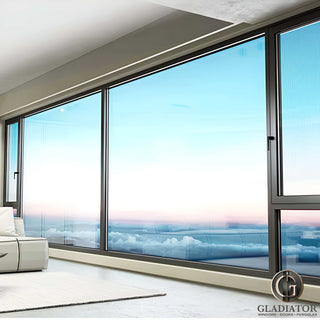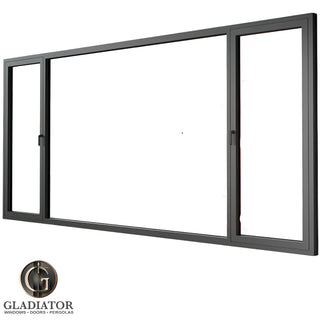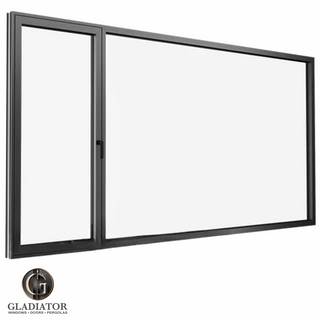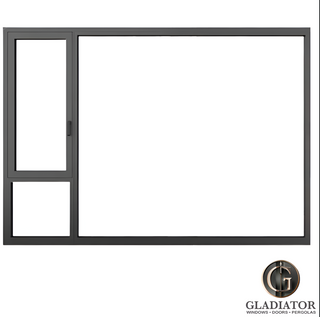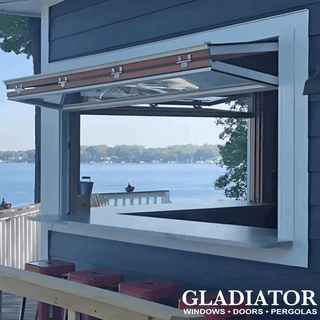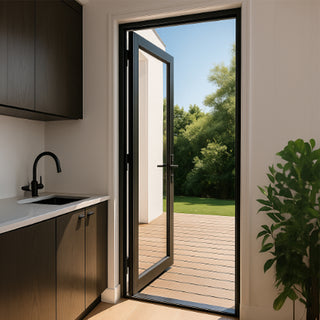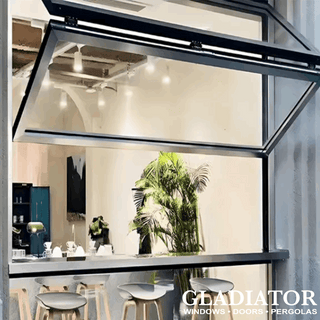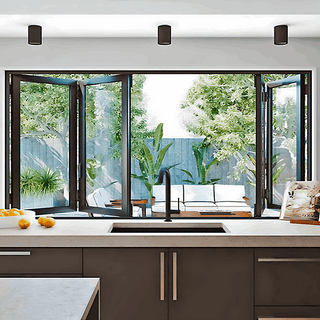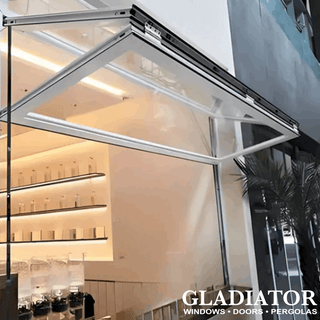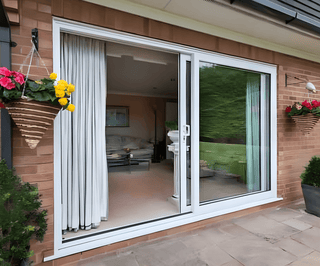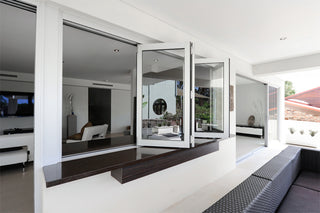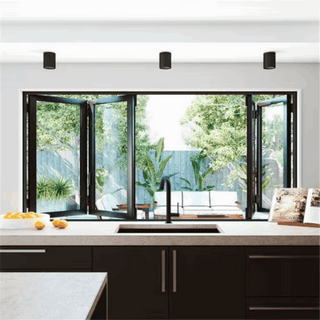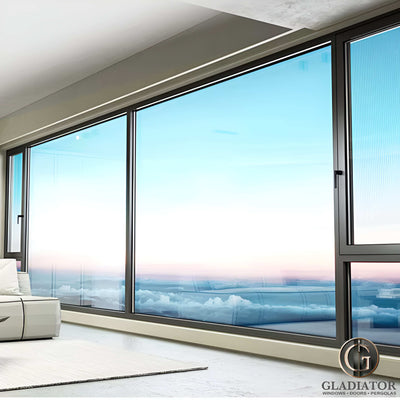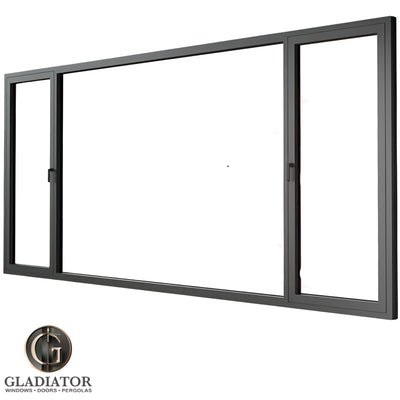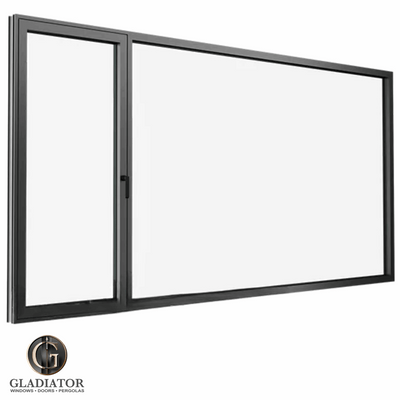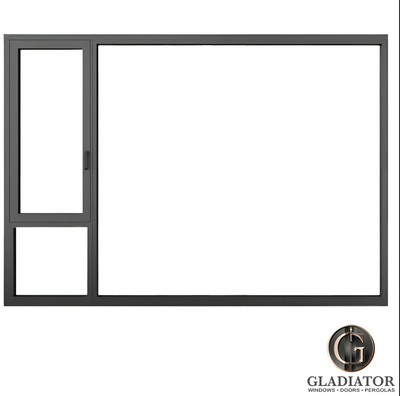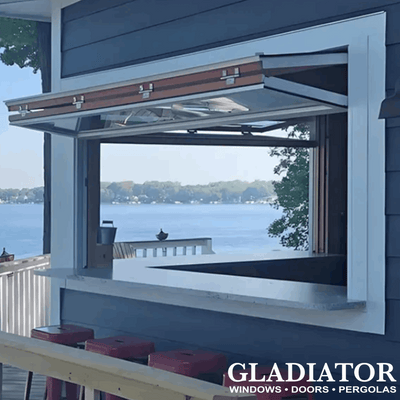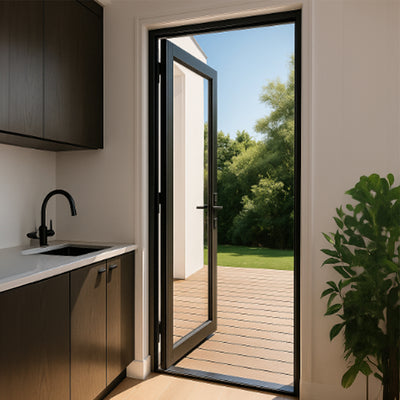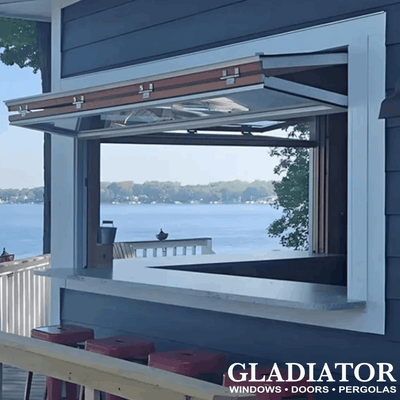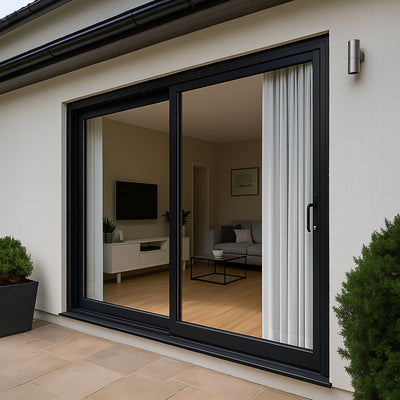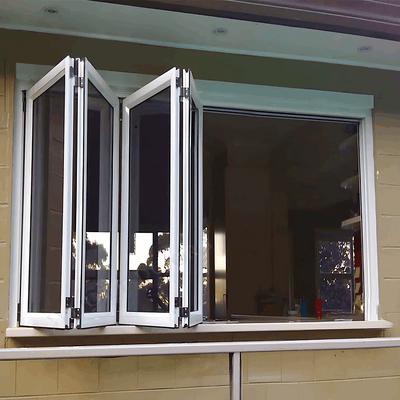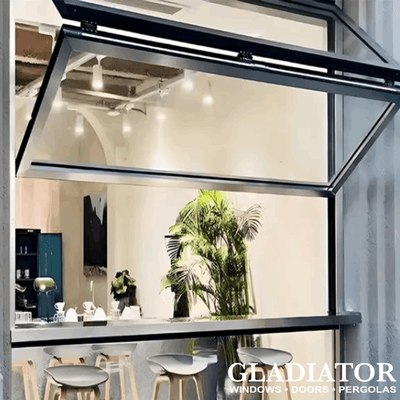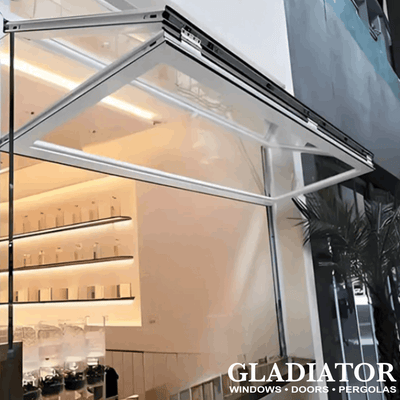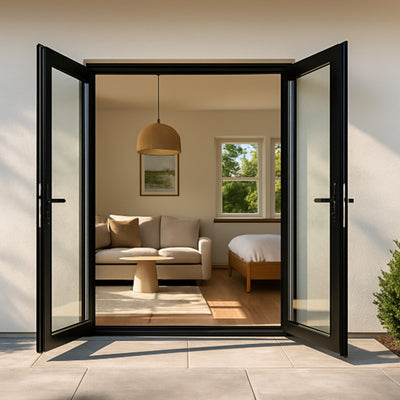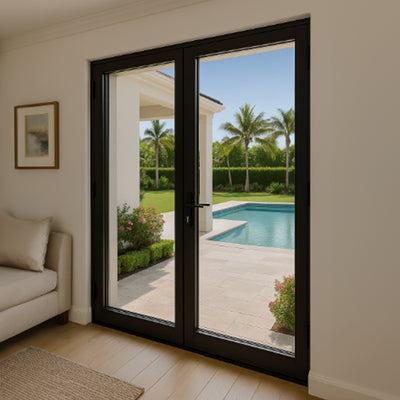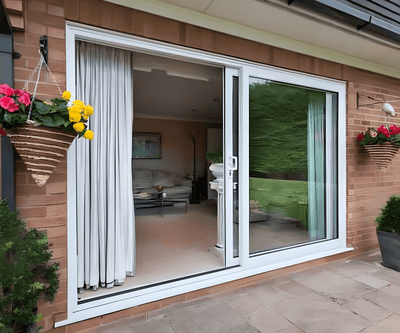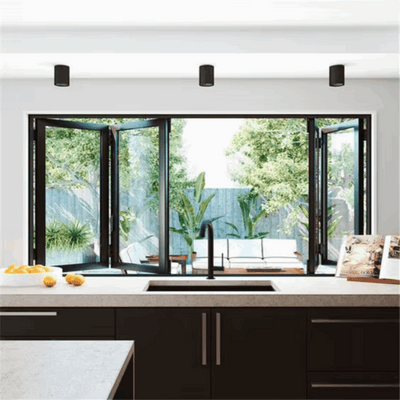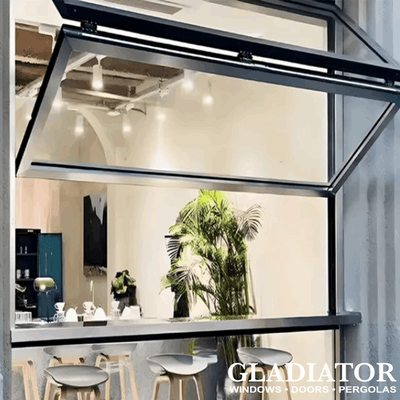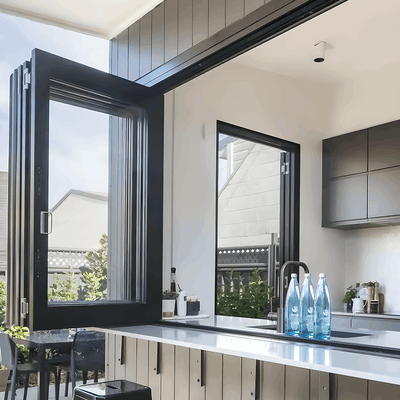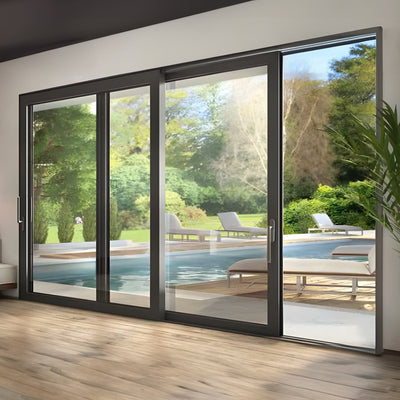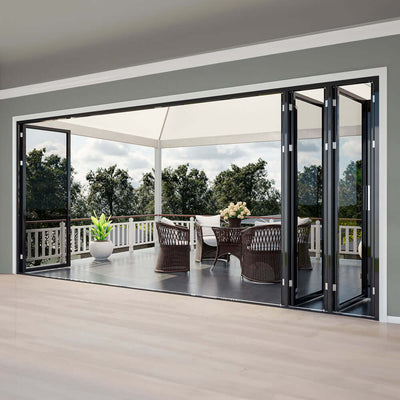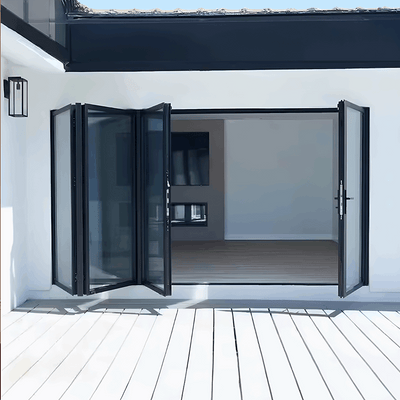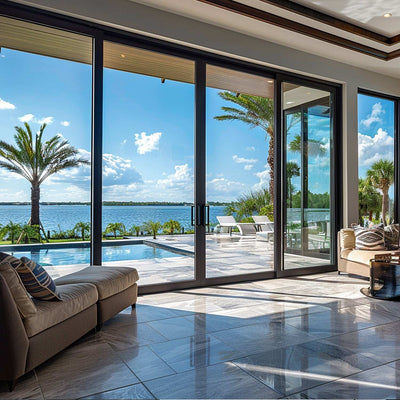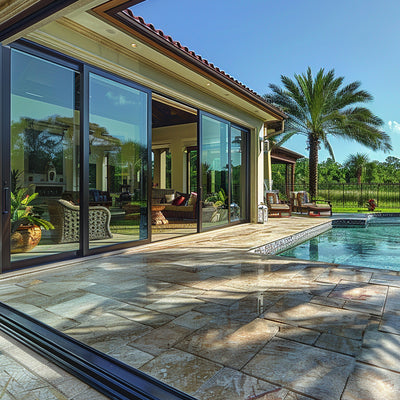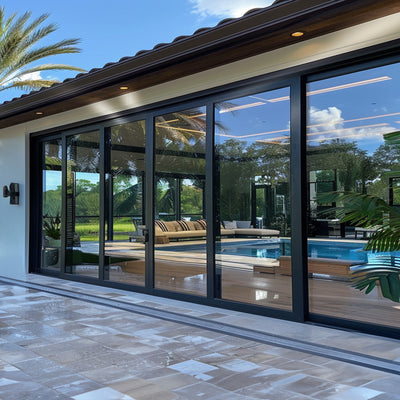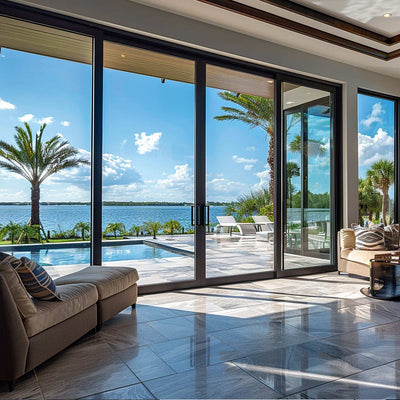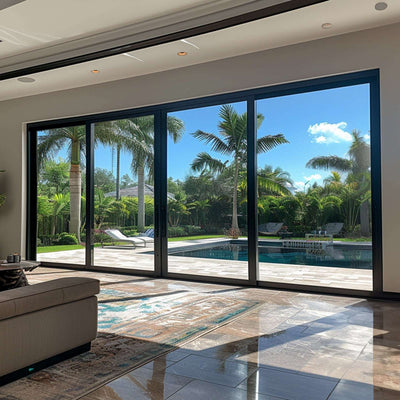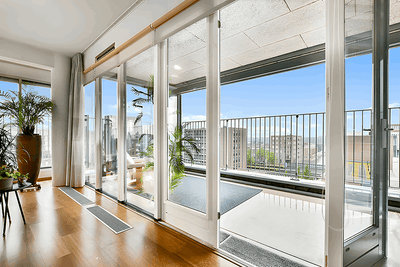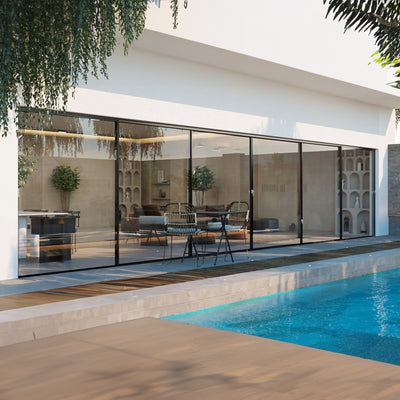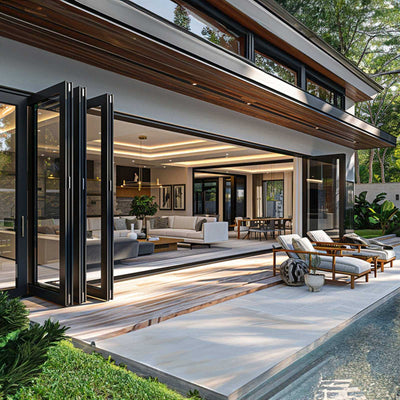Elevate Your Outdoors: Pergola Design Inspiration
Want to transform your outdoor space? A well-designed pergola can create a stunning focal point and enhance functionality. This listicle presents 10 diverse pergola design ideas to inspire your next project, from minimalist modern pergolas to traditional wooden structures and pergolas with integrated kitchens or fire features. Explore the pros and cons of each style to discover the perfect pergola design for your home, whether you're a homeowner, contractor, or builder. We'll cover attached pergolas, freestanding louvered roof pergolas, and even vineyard-inspired designs. Let's find the ideal pergola to elevate your outdoor living.
1. Modern Minimalist Pergola
For those seeking a sleek and contemporary outdoor space, the modern minimalist pergola stands out as a top pergola design idea. This style prioritizes clean lines, geometric shapes, and a distinct lack of ornamentation, resulting in an understated elegance that complements modern architecture. Constructed primarily from materials like steel, aluminum, or composite materials, these pergolas offer durability and weather resistance while maintaining a streamlined aesthetic. They often incorporate features like retractable canopies, glass or acrylic panels, and integrated LED lighting systems, seamlessly blending functionality with style.
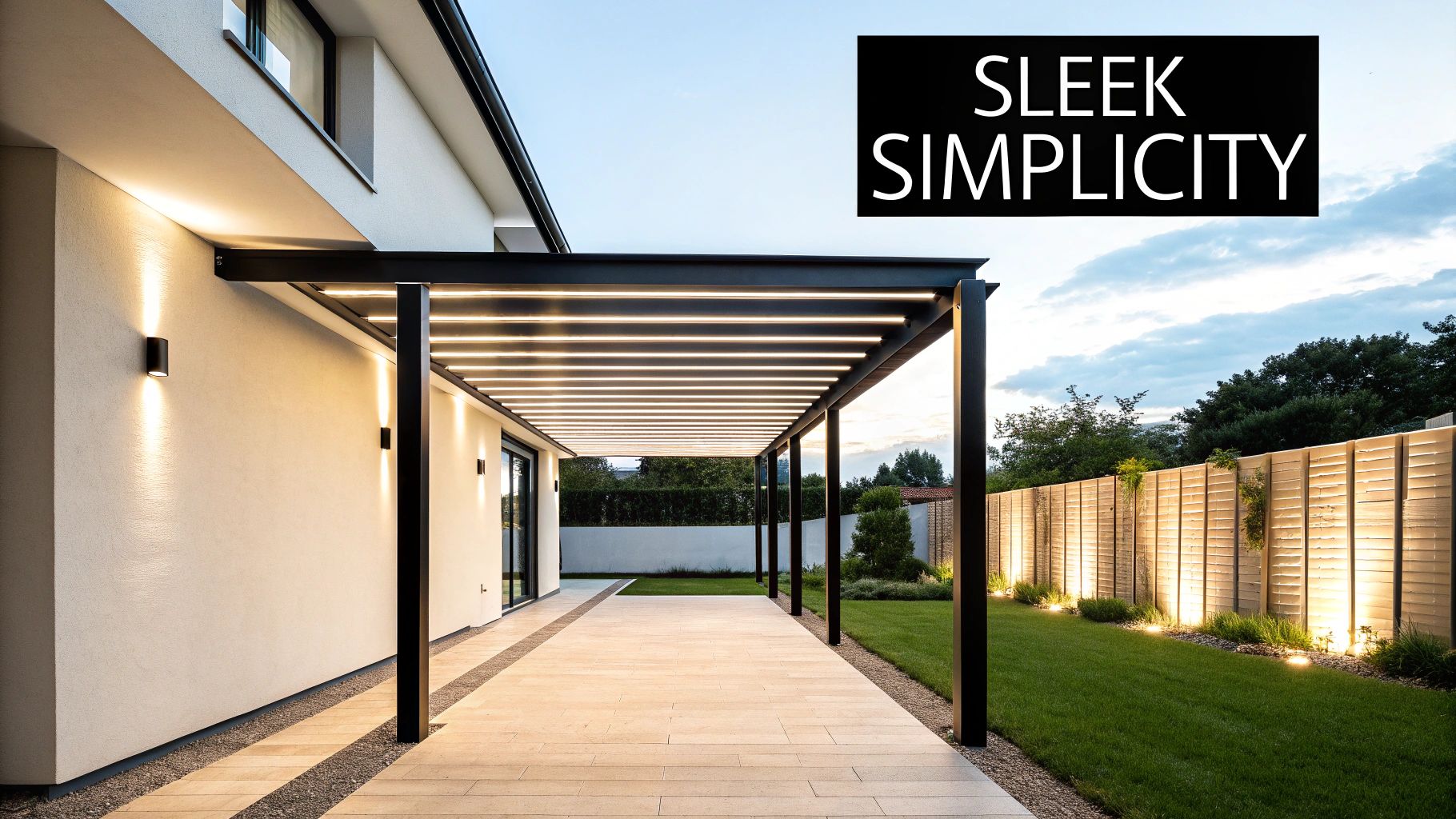
Modern minimalist pergolas shine in their simplicity. The focus on functionality doesn't detract from their visual appeal; rather, it enhances it. The neutral color palettes—typically whites, blacks, and grays—create a sense of calm and sophistication, while the use of metal or composite construction ensures longevity. These materials are inherently low-maintenance and can withstand the elements far better than traditional wooden pergolas. Furthermore, the integration of high-tech features, such as automated shades and lighting, elevates the outdoor living experience. Imagine enjoying a cool evening under your pergola, the soft glow of integrated LEDs illuminating the space while automated shades provide protection from the elements. Learn more about Modern Minimalist Pergola to see the breadth of available options.
Examples of successful implementations range from the sophisticated Equinox Louvered Roof by Outdoor Elements to Kalamazoo Outdoor Gourmet's striking modern steel pergola installations. Even HGTV designer Joanna Gaines has embraced this trend, showcasing a steel pergola adorned with climbing vines in her own backyard, demonstrating how the modern aesthetic can be softened with natural elements.
Pros:
- Low maintenance requirements
- Weather-resistant materials
- Clean aesthetic complements modern architecture
- Often more durable than traditional wooden pergolas
- Can incorporate high-tech features like automated shades
Cons:
- Can be more expensive than traditional wood designs
- May lack the warmth and natural feel of wooden structures
- Limited customization options with pre-fabricated kits
- May require professional installation
Tips for Implementing a Modern Minimalist Pergola:
- Choose powder-coated metals for increased durability: Powder coating adds an extra layer of protection against rust and corrosion.
- Consider adding glass panels for better weather protection: Glass panels create a more enclosed space, extending the usability of your pergola throughout the year.
- Incorporate built-in lighting for evening enjoyment: Integrated LEDs or strategically placed spotlights can create a magical ambiance.
- Select materials that complement your home’s exterior for cohesion: This ensures a seamless transition between indoor and outdoor spaces.
- Add warmth with outdoor furniture and fabrics: Soften the sleek lines of the pergola with comfortable seating, textured throws, and vibrant cushions.
This pergola design idea has been popularized by features in design-focused publications like Dwell Magazine and Architectural Digest, as well as through the offerings of high-end designer brands like Restoration Hardware and CB2. Its inclusion in this list is warranted by its growing popularity, inherent durability, and ability to create a truly stunning outdoor living space. Whether you are a homeowner, condo owner, contractor, or developer, the modern minimalist pergola presents a compelling option for those seeking a contemporary and low-maintenance outdoor structure.
2. Traditional Wooden Pergola
A traditional wooden pergola offers a timeless and natural aesthetic that seamlessly blends with various outdoor settings. As a classic among pergola design ideas, it relies on the inherent beauty and warmth of natural wood, combined with time-tested carpentry techniques, to create a functional and visually appealing outdoor structure. This style is a popular choice for homeowners seeking to enhance their patios, gardens, or decks with a touch of classic charm.
These pergolas are typically constructed from durable woods like cedar, redwood, or pressure-treated pine, chosen for their resistance to the elements. The construction emphasizes traditional joinery and craftsmanship, often featuring decorative elements such as curved bracings, intricate latticework, and ornamental post caps. This attention to detail elevates the pergola from a simple structure to a statement piece, adding architectural interest and enhancing the overall ambiance of the space. The open lattice or slatted roof design provides dappled shade while allowing sunlight to filter through, creating a pleasant and inviting atmosphere. Additionally, the structure readily supports climbing plants, offering an opportunity to further integrate the pergola with the natural surroundings.
Examples of Successful Implementations:
- Martha Stewart's Bedford Farm: Her iconic cedar pergola showcases the classic beauty and versatility of this design, serving as both a focal point and a functional outdoor living space.
- Southern Living Magazine Showcase Gardens: These gardens frequently feature traditional wooden pergolas, demonstrating how they can be adapted to various landscape styles and planting schemes.
- Historic Pergolas at the Biltmore Estate: These grand structures exemplify the enduring appeal and architectural significance of traditional wooden pergolas, showcasing their elegance and craftsmanship.
Pros and Cons:
Pros:
- Natural, warm aesthetic: Wood offers a timeless appeal that complements any outdoor space.
- Highly customizable: Design and size can be tailored to specific needs and preferences.
- Often less expensive than metal alternatives: Wood can be a more budget-friendly option, especially for DIY projects.
- DIY-friendly: Experienced woodworkers can often build their own traditional wooden pergola.
- Ages beautifully: With proper maintenance, a wooden pergola develops a rich patina over time.
Cons:
- Requires regular maintenance: Regular staining and sealing are essential to protect the wood from the elements.
- Susceptible to rot, insects, and weather damage: Wood is a natural material and is therefore vulnerable to these issues.
- Shorter lifespan than aluminum or vinyl alternatives: While beautiful, wood requires more upkeep and may need replacing sooner than other materials.
- May need rebuilding components after 10-15 years: Depending on the climate and maintenance, certain parts may require rebuilding over time.
Tips for Building and Maintaining a Traditional Wooden Pergola:
- Choose rot-resistant wood: Opt for naturally durable woods like cedar or redwood to extend the life of your pergola.
- Apply UV-protective sealant annually: This will protect the wood from sun damage and fading.
- Position for optimal sun exposure: Consider the sun's path throughout the day to maximize shade and minimize direct sunlight.
- Secure posts properly: Choose appropriate anchoring methods based on your ground conditions.
- Plan for proper water drainage: Ensure adequate drainage to prevent water accumulation and rot.
Why a Traditional Wooden Pergola Deserves Its Place on This List:
The traditional wooden pergola offers a classic, versatile, and often more affordable option for enhancing outdoor living spaces. Its natural beauty, customizability, and potential for DIY construction make it a compelling choice for homeowners seeking a timeless and elegant addition to their property. Popularized by publications like This Old House and Better Homes & Gardens, as well as the influence of the Craftsman-style architectural movement, this pergola design continues to be a beloved choice for creating inviting and functional outdoor retreats. It earns its place on this list of pergola design ideas as a foundational style that offers both beauty and practicality.
3. Attached Pergola with Retractable Canopy
An attached pergola with a retractable canopy is a versatile pergola design idea that seamlessly extends your home's living space while offering protection from the elements. Unlike freestanding pergolas, this structure connects directly to an exterior wall of your house, using it for support. The defining feature is the retractable canopy system, typically made of weather-resistant fabric, which allows you to control the amount of shade and sun exposure. This adaptability makes it ideal for enjoying your outdoor space throughout the day and in various weather conditions. This type of pergola maximizes usability by offering flexibility for different weather conditions and times of day, making it a worthwhile investment.

The wall-mounted structure is supported by posts on the exterior side, creating a stable framework for the retractable canopy. These canopies are available in manual or motorized versions, with the latter offering convenient remote-control operation. A variety of weather-resistant fabrics are available in various colors and opacities, allowing you to customize the look and feel of your outdoor space. Integrated drainage systems prevent water from pooling on the canopy, while optional side curtains or screens provide additional privacy and protection from wind and insects. You can learn more about Attached Pergola with Retractable Canopy to see the diverse options available.
Examples of successful implementations include ShadeFX canopy systems, often seen in high-end residential installations, and Sunbrella fabric pergola covers frequently used in resort properties. The look can also be adapted for a more intimate setting, reminiscent of European café-style retractable pergolas, creating a charming and inviting outdoor dining area.
Pros:
- Adjustable shade control: Enjoy full sun, partial shade, or complete coverage with ease.
- Rain protection: When fully extended, the canopy provides a dry space for outdoor activities.
- Extends usable living space: Creates a seamless transition between indoor and outdoor living.
- Lower cost than full room additions: A more affordable way to expand your living area.
- Can reduce cooling costs: By shading adjacent interior spaces, the pergola can help lower energy bills.
Cons:
- Requires proper wall attachment and waterproofing: Professional installation is crucial to prevent leaks and structural issues.
- Canopy fabrics need periodic replacement: Expect to replace the fabric every 5-8 years, depending on weather conditions and usage.
- Motorized systems may require maintenance: Occasional servicing may be needed to ensure smooth operation.
- Wind constraints: The canopy must be retracted in high winds to prevent damage.
- Permits may be required: As the structure attaches to the home, building permits may be necessary.
Tips for Designing an Attached Pergola with Retractable Canopy:
- Ensure proper slope for water runoff: A minimum 15° pitch is recommended to prevent water accumulation.
- Choose marine-grade fabrics: These fabrics offer superior durability and resistance to fading and mildew.
- Install wind sensors: Automatic retraction in high winds can prevent damage to the canopy.
- Consult a structural engineer: Verify the wall attachment's safety and ensure the structure can handle the load.
- Consider heated options: For extended seasonal use, consider incorporating heating elements into the pergola design.
The attached pergola with a retractable canopy deserves its place on this list of pergola design ideas because it offers a perfect blend of functionality, aesthetics, and versatility. Its popularity is fueled by innovative brands like ShadeFX and Sunbrella, European outdoor living trends, and home improvement shows like HGTV's Outdoor Oasis series, making it a sought-after feature for homeowners, condo owners, contractors, and builders alike. Whether you're building a new home or renovating an existing one, this pergola design is an excellent option for enhancing your outdoor living experience.
4. Freestanding Louvered Roof Pergola
For those seeking ultimate control over their outdoor environment, the freestanding louvered roof pergola stands out as a premier pergola design idea. This high-tech option combines the aesthetic appeal of a traditional pergola with the functionality of a retractable roof. Unlike static pergola designs, a louvered roof system features adjustable aluminum louvers that can be rotated from 0 to 160 degrees, allowing you to fine-tune sunlight, airflow, and even rain protection. This dynamic control makes it a versatile choice for homeowners, condo owners, contractors, builders, and developers alike.
So how does it work? These systems typically operate via remote control or smartphone app, offering effortless control at your fingertips. Integrated weather sensors can even automate operation, closing the louvers automatically at the first sign of rain. This automated functionality offers peace of mind and protects your outdoor furniture and gatherings from unexpected weather changes. Learn more about Freestanding Louvered Roof Pergola
Features and Benefits:
- Aluminum Construction with Powder-Coated Finish: Ensures durability and weather resistance, requiring minimal maintenance.
- Motorized Adjustable Louvers (0-160° Rotation): Provides precise control over sunlight and ventilation.
- Integrated Guttering and Downspout System: Effectively manages rainwater runoff, preventing pooling and damage.
- Weather Sensors for Automatic Operation: Offers convenience and protection from unexpected weather events.
- Smart Home Integration Capabilities: Allows seamless control and automation alongside other smart home devices.
Examples of Successful Implementation:
Companies like StruXure (formerly Arcadia) have popularized this pergola design idea. You can find inspiring examples of their installations in luxury homes, commercial restaurant patios (like the elegant StruXure Pergola X), and other sophisticated outdoor spaces. Equinox Louvered Roof and Outdoor Living Brands franchises also offer high-quality louvered roof systems. These examples demonstrate the versatility and adaptability of this pergola design to various applications and architectural styles.
Pros:
- Complete Control over Sun Exposure and Ventilation: Create the perfect outdoor ambiance for any occasion.
- Full Rain Protection When Closed: Enjoy your outdoor space even during inclement weather.
- Snow Load Capacity (When Properly Designed): Extends the usability of your outdoor space year-round in colder climates.
- Minimal Maintenance Requirements: Spend less time on upkeep and more time enjoying your pergola.
- Extended Outdoor Season Usage: Create a comfortable outdoor environment for a longer period throughout the year.
Cons:
- Higher Cost than Traditional Pergolas ($15,000-$50,000+): Represents a significant investment.
- Requires Power Source for Operation: Needs electrical wiring for functionality.
- Potential for Mechanical Failures: Like any motorized system, there's a possibility of malfunctions.
- More Complex Installation Process: Often requires professional installation.
- May Require Professional Maintenance: Although maintenance is minimal, specialized technicians might be needed for certain repairs.
Tips for Implementing a Freestanding Louvered Roof Pergola:
- Include rain sensors for automatic closure. This convenient feature protects your outdoor furniture and prevents unexpected disruptions to your gatherings.
- Choose a system with manual override in case of power failure. Ensure you can still operate the louvers even during a power outage.
- Consider zoned louver control for larger installations. This allows for customized shading and ventilation across different areas of the pergola.
- Install on a slight grade for proper water drainage. Prevent water from pooling on the roof and ensure efficient runoff.
- Add integrated lighting and heating for evening use. Extend the enjoyment of your outdoor space into the cooler evenings.
This pergola design idea earns its place on this list because it offers unparalleled control and flexibility, transforming your outdoor space into a truly versatile extension of your home. While the initial investment is higher than traditional pergolas, the benefits of customized comfort, weather protection, and extended usability make it a worthwhile consideration for discerning homeowners and commercial property owners.
5. Pergola with Integrated Outdoor Kitchen
A pergola with an integrated outdoor kitchen represents one of the most luxurious and functional pergola design ideas, transforming your backyard into a complete outdoor entertainment hub. This design seamlessly blends cooking, dining, and relaxation under one stylish structure, making it ideal for homeowners who love to entertain. Instead of making trips back and forth to the indoor kitchen, you can prepare, cook, and serve meals entirely outdoors, fostering a more convivial atmosphere. This approach expands your living space and enhances your enjoyment of the outdoors.
This pergola design idea revolves around incorporating a fully functional kitchen setup into the pergola structure. This includes appliances like built-in grills, cooktops, pizza ovens, and sometimes even refrigeration. Durable countertops made of granite, concrete, or composite materials provide ample workspace for food preparation. Integrated utility connections for gas, water, and electricity power the appliances, while task lighting illuminates cooking areas, and ventilation systems manage smoke and odors.
Examples of Successful Implementations:
- High-End Brands: Companies like Kalamazoo Outdoor Gourmet and Lynx Professional Grills showcase stunning examples of high-end integrated outdoor kitchen pergolas, often featuring premium materials and cutting-edge appliances. These installations provide inspiration for design aesthetics and functionality.
- Celebrity Inspiration: Scott Disick's outdoor kitchen pergola, featured in Architectural Digest, demonstrates how this pergola design idea can create a stylish and functional outdoor living space. Celebrity examples often highlight current design trends.
Why Choose a Pergola with an Integrated Outdoor Kitchen?
This pergola design idea earns its spot on the list due to its ability to elevate outdoor living to a new level. It offers numerous benefits, including:
- Complete Entertainment Center: Consolidates cooking, dining, and lounging into one convenient location.
- Increased Home Value: Adds significant value to your property due to its high-end appeal and functionality.
- Comfort and Convenience: Keeps cooking heat and odors outside, enhancing comfort during warmer months.
- Expanded Living Space: Extends your usable living area, perfect for gatherings and parties.
- Year-Round Use: Can be designed for year-round use with features like heaters and weatherproof materials, especially in milder climates.
Pros and Cons:
Pros:
- Creates a complete outdoor entertainment center
- Increases home value significantly
- Keeps cooking heat and odors outside
- Expands living space for entertaining
- Can be designed for year-round use in many climates
Cons:
- High cost ($25,000-$100,000+ for comprehensive setups)
- Requires professional installation of utilities
- May need permits for both structure and utilities
- Requires proper planning for smoke ventilation
- Higher complexity in design and execution
Actionable Tips for Implementation:
- Wind Direction: Position cooking areas strategically, taking prevailing winds into account to prevent smoke from blowing towards dining or seating areas.
- Ventilation: Install appropriate ventilation systems, such as range hoods, above cooking surfaces to effectively manage smoke and grease.
- Drainage and Surfaces: Plan for proper drainage and use water-resistant materials for countertops and flooring to withstand the elements.
- Electrical Safety: Install GFCI outlets for all electrical needs to ensure safety in an outdoor environment.
- Lighting: Consider both task lighting for food preparation and ambient lighting for evening enjoyment.
- Storage: Include ample storage solutions for outdoor cookware, utensils, and supplies.
Popularized By:
The popularity of outdoor kitchen pergolas has been fueled by various sources, including:
- HGTV: HGTV's outdoor kitchen showcases have inspired homeowners with creative design ideas and practical tips.
- Celebrity Chefs: Outdoor kitchen designs by celebrity chefs have further elevated the trend, demonstrating the potential for luxury and functionality.
- Luxury Brands: High-end outdoor living brands like Kalamazoo and Lynx have contributed to the growing interest in these sophisticated outdoor spaces.
By carefully considering these factors and incorporating these tips, you can create a truly exceptional pergola with an integrated outdoor kitchen that will transform your backyard into the ultimate entertainment destination. This pergola design idea provides a unique and valuable upgrade for homeowners seeking to enhance their outdoor living experience.
6. Asian-Inspired Timber Frame Pergola
For a pergola design that exudes tranquility and timeless elegance, consider an Asian-inspired timber frame pergola. This style draws inspiration from traditional Japanese and Chinese architecture, emphasizing natural materials, exposed timber framing, and meticulous joinery. The result is a structure that seamlessly blends with the surrounding landscape, creating a serene and meditative outdoor space. These pergolas are defined by their exposed post-and-beam construction, often utilizing traditional joinery techniques like mortise and tenon connections that minimize the need for visible hardware. Curved or upturned roof edges, reminiscent of traditional temple architecture, add a distinctive visual flair. Natural wood finishes, typically in durable species like cypress, cedar, or redwood, are favored for their warmth and weather resistance.
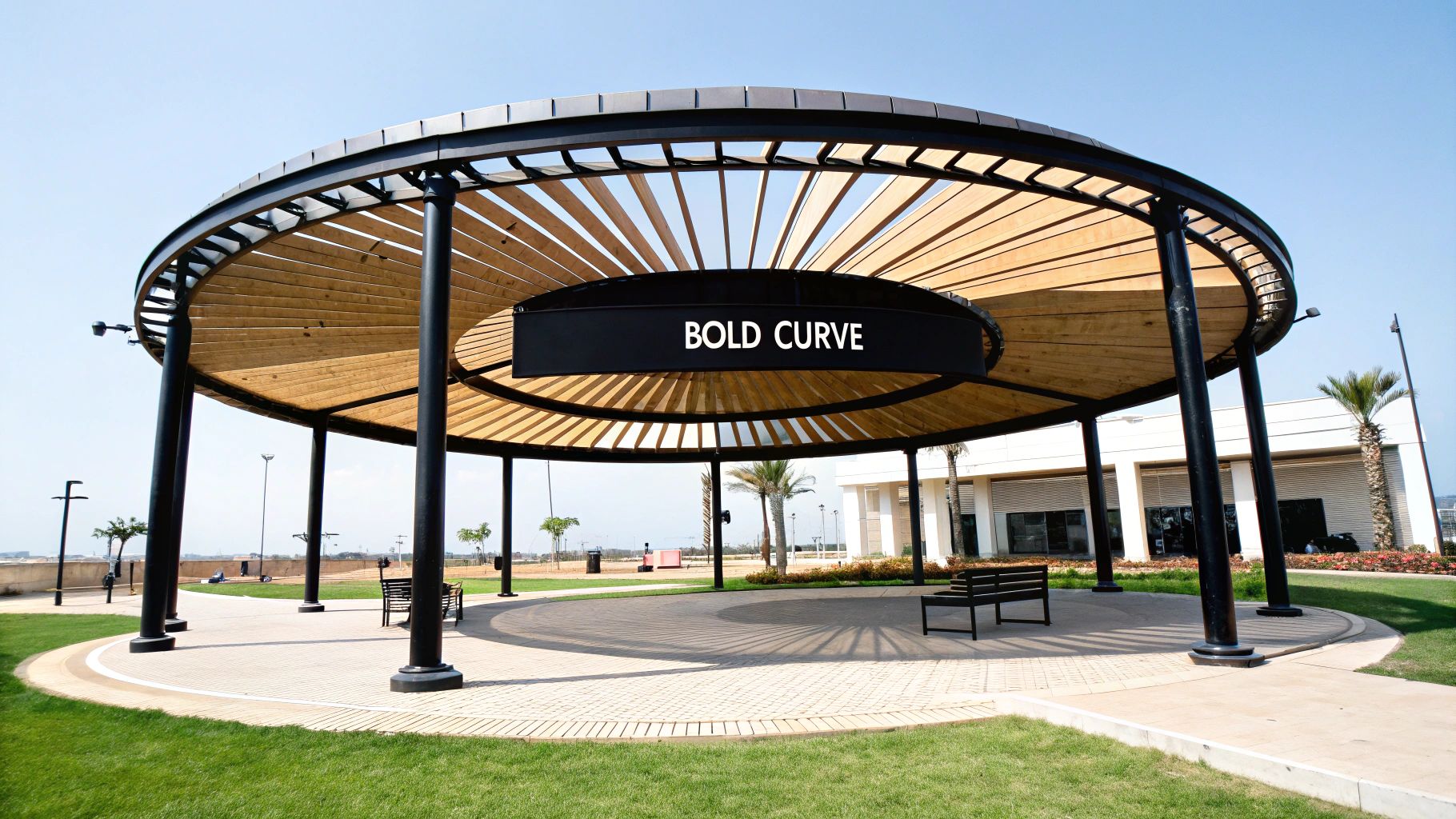
The beauty of an Asian-inspired timber frame pergola lies in its ability to evoke a sense of peace and connection with nature. The clean lines of the timber frame, combined with the natural beauty of the wood, create a calming and contemplative atmosphere. This pergola design idea deserves a place on this list because it offers a unique aesthetic that stands apart from more conventional pergola styles. It's an ideal choice for homeowners, contractors, and builders seeking to create a truly distinctive outdoor living space.
Features and Benefits:
- Distinctive Architectural Character: The exposed timber framing and traditional joinery create a visually striking structure that adds architectural interest to any landscape.
- Peaceful Atmosphere: The natural materials and elegant design foster a sense of tranquility and serenity, perfect for relaxation and meditation.
- Skilled Craftsmanship: The intricate joinery and attention to detail inherent in this style add value and longevity to the structure.
- Harmony with Nature: This pergola style seamlessly integrates with natural landscape elements, particularly Japanese-inspired gardens.
- Privacy Options: Traditional screen elements made from bamboo or other natural materials can be incorporated for added privacy.
Pros:
- Distinctive architectural character
- Creates a meditative, peaceful atmosphere
- Skilled craftsmanship adds value
- Harmonizes with Japanese-inspired gardens
- Can incorporate traditional screen elements for privacy
Cons:
- Requires specialized woodworking skills
- Higher labor costs for authentic joinery
- More complex to design correctly
- May be difficult to source authentic materials
- Requires regular maintenance of wood elements
Examples:
- Portland Japanese Garden's tea house pergola
- The Japanese-inspired pergola at Huntington Gardens in California
- Architect George Nakashima's garden structures
Tips for Implementation:
- Study authentic proportions of traditional Asian structures to ensure a balanced and harmonious design.
- Consider incorporating stone elements at the base of the pergola posts for added stability and visual appeal.
- Use natural plant materials like bamboo for privacy screens, enhancing the organic feel of the structure.
- Apply traditional wood preservation techniques like shou sugi ban (charred wood) for increased durability and a unique aesthetic.
- Integrate the pergola with water features like ponds or fountains to further enhance the sense of tranquility.
Popularized By:
- Frank Lloyd Wright's Japanese-influenced designs
- Landscape architect Hoichi Kurisu
- Garden designer David Slawson
- Traditional Japanese carpentry guilds
This pergola design is a beautiful and functional addition to any property seeking a touch of Asian-inspired serenity. While it requires specialized skills and careful planning, the end result is a truly unique and rewarding outdoor space. Whether you are a homeowner embarking on a backyard renovation, a contractor seeking pergola design ideas, or a builder looking to offer unique outdoor living solutions, the Asian-inspired timber frame pergola provides a compelling option that seamlessly blends artistry and functionality.
7. Contemporary Circular Pergola: A Dramatic Focal Point for Your Outdoor Space
Looking for pergola design ideas that break the mold? A contemporary circular pergola offers a stunning alternative to traditional rectangular structures, creating a dramatic focal point in any landscape. This design swaps straight lines for curves, resulting in a unique and visually appealing addition to your outdoor living space. Instead of the typical four-cornered structure, a circular pergola embraces flowing lines, creating a softer, more organic feel. This approach not only adds visual interest but also enhances functionality, making it a worthwhile consideration for your next outdoor project. Learn more about Contemporary Circular Pergola
A circular pergola works by radiating roof beams from a central point, creating a canopy overhead. This central point can be further emphasized by incorporating a focal feature like a fire pit or a water feature. The circular footprint encourages conversation and gathering, as it naturally creates a central hub within the space. Imagine relaxing around a crackling fire under the starlit sky framed by the elegant curves of your pergola – this is the magic a circular design can bring. The absence of corners also allows for better traffic flow and defines the space without obstructing views.
The Serpentine Gallery Pavilion series in London, renowned for its innovative architectural designs, often features stunning examples of circular and curved structures. Similarly, the circular pergola at the Chicago Botanic Garden serves as a breathtaking centerpiece, showcasing how this design can elevate a landscape. Award-winning garden designs by landscape architect Cleve West also offer inspiration for incorporating circular pergolas into residential settings. These examples highlight the versatility of this pergola design idea, adapting it to both grand public spaces and intimate private gardens.
Features and Benefits:
- Circular, oval, or curved footprint: This breaks the traditional rectangular mold, creating a unique design statement.
- Radiating roof beams: Emanating from a central point, these beams contribute to the dynamic visual appeal.
- Material versatility: Bent wood, steel, or aluminum can be used, offering flexibility in style and budget.
- Integration of additional elements: Fabric sails or green roof elements can be incorporated for enhanced shade and aesthetic appeal.
- Central focal point: A fire pit, water feature, or sculpture can further enhance the gathering space.
Pros:
- Creates a dramatic visual focal point.
- Encourages conversation and gathering.
- Offers a unique design statement.
- Facilitates better traffic flow without corners.
- Defines space without blocking views.
Cons:
- More complex and expensive to design and build.
- Requires specialized skills for curved element construction.
- Often necessitates custom furniture for space efficiency.
- Limited standardized covering options.
- More challenging to integrate with rectangular architecture.
Tips for Implementing a Circular Pergola:
- Consider sight lines: Analyze views from all angles during the design phase to ensure the pergola complements the surrounding landscape.
- Structural support: Plan for structural support that doesn't obstruct views or impede movement within the space.
- Bending techniques: Research and employ specialized bending techniques if working with wooden elements.
- Create templates: Prepare templates for curved components before cutting materials to ensure accuracy and minimize waste.
- Enhance with lighting: Consider lighting that accentuates the curved silhouette at night, adding a touch of magic to your outdoor space.
This pergola design idea, popularized by influential figures like landscape architect Thomas Woltz and showcased in prominent publications like Architectural Digest, is gaining traction in modern landscape design. Designer brands like Gloster and Kettal also offer pre-fabricated options, making this striking feature more accessible to homeowners. While it presents some construction challenges, the unique aesthetic and functional benefits of a contemporary circular pergola make it a truly exceptional choice for those seeking a distinctive and engaging outdoor living area. Whether you're a homeowner, contractor, or developer, this pergola design idea is worth exploring for projects that demand a touch of architectural flair and a commitment to creating a unique outdoor experience.
8. Vineyard-Inspired Grape Arbor Pergola
A vineyard-inspired grape arbor pergola offers a unique blend of functionality and aesthetic appeal, making it a standout choice among pergola design ideas. This design takes inspiration from traditional vineyard structures, creating a pergola specifically intended to support climbing grapevines or other fruiting vines. The result is a living canopy that provides shade, edible harvests, and dramatic seasonal changes in your outdoor space. This pergola style is ideal for homeowners, contractors, and developers seeking to incorporate a touch of rustic charm and practical functionality into their projects.
This pergola style isn’t just a simple overhead structure; it's a carefully designed system that supports the entire lifecycle of the vine. Sturdy post construction is crucial, as mature grapevines can become quite heavy. A wide lattice or cable system provides the framework for training the vines, allowing them to climb and spread. Proper spacing between lattice slats (18-24 inches) is vital for air circulation and vine health, preventing diseases and promoting optimal fruit production. Many vineyard-inspired pergolas also incorporate integrated irrigation systems to ensure consistent watering. The design should also take pruning access into account, as regular maintenance is essential for healthy vine growth.
The benefits of a vineyard-inspired pergola are numerous. Beyond the obvious advantage of providing both shade and edible harvests, it creates dramatic seasonal interest. The vibrant green foliage of summer gives way to colorful autumn leaves and, eventually, the bare, sculptural branches of winter. The natural cooling effect of transpiration from the vines can also create a more comfortable microclimate beneath the pergola. This type of pergola seamlessly connects gardening with outdoor living, offering a tranquil space to relax and enjoy the fruits (literally!) of your labor. The aesthetic is both historical and romantic, evoking images of Tuscan villas or Thomas Jefferson's Monticello, both examples of successful implementation of grape arbors. Historic California winery tasting areas also frequently utilize this pergola design, showcasing its ability to create a welcoming and elegant atmosphere.
However, this pergola design isn't without its challenges. It requires some knowledge of viticulture or vine growing, including pruning, training, and pest management. Seasonal maintenance is necessary, and full establishment of the vines takes 3-5 years. If the fruit isn't harvested promptly, it can create a messy drop. Grapevines are also susceptible to various plant diseases and pests, requiring proactive management.
Tips for Success:
- Choose the Right Grapes: Select grape varieties appropriate for your climate and desired use (table grapes, wine grapes, etc.).
- Strong Support: Install robust support cables or a strong lattice system designed to handle the weight of mature vines.
- Spacing is Key: Ensure proper spacing (18-24 inches) between lattice slats for air circulation and vine growth.
- Maintenance Access: Design with seasonal maintenance access in mind, ensuring you can easily reach all parts of the vine for pruning and training.
- Winter Sun: Consider deciduous vines to allow for winter sun penetration.
- Sufficient Height: Design with enough height (minimum 7 feet) to comfortably walk under when the vines are mature.
The vineyard-inspired grape arbor pergola has been popularized through Mediterranean garden design, the organic gardening movement, and the writings of garden experts like P. Allen Smith. It's also become a popular feature in farm-to-table restaurant installations. By carefully considering the pros and cons and following these tips, you can create a stunning and productive addition to your outdoor space, truly elevating your pergola design. This design idea deserves its place on this list because it offers a unique combination of beauty, functionality, and connection to nature. It’s more than just a pergola; it’s a living, evolving piece of garden art.
9. Multi-Level Terraced Pergola: A Grand Design for Elevated Outdoor Living
Looking for pergola design ideas that go beyond the ordinary? A multi-level terraced pergola might be the perfect solution, especially if your property features a slope or you desire distinct outdoor zones. This innovative approach takes the classic pergola structure and expands it across multiple platforms at varying heights, creating a dynamic and visually captivating outdoor space. These terraced pergolas can transform challenging landscapes into stunning multi-functional areas, integrating seamlessly with the natural topography.
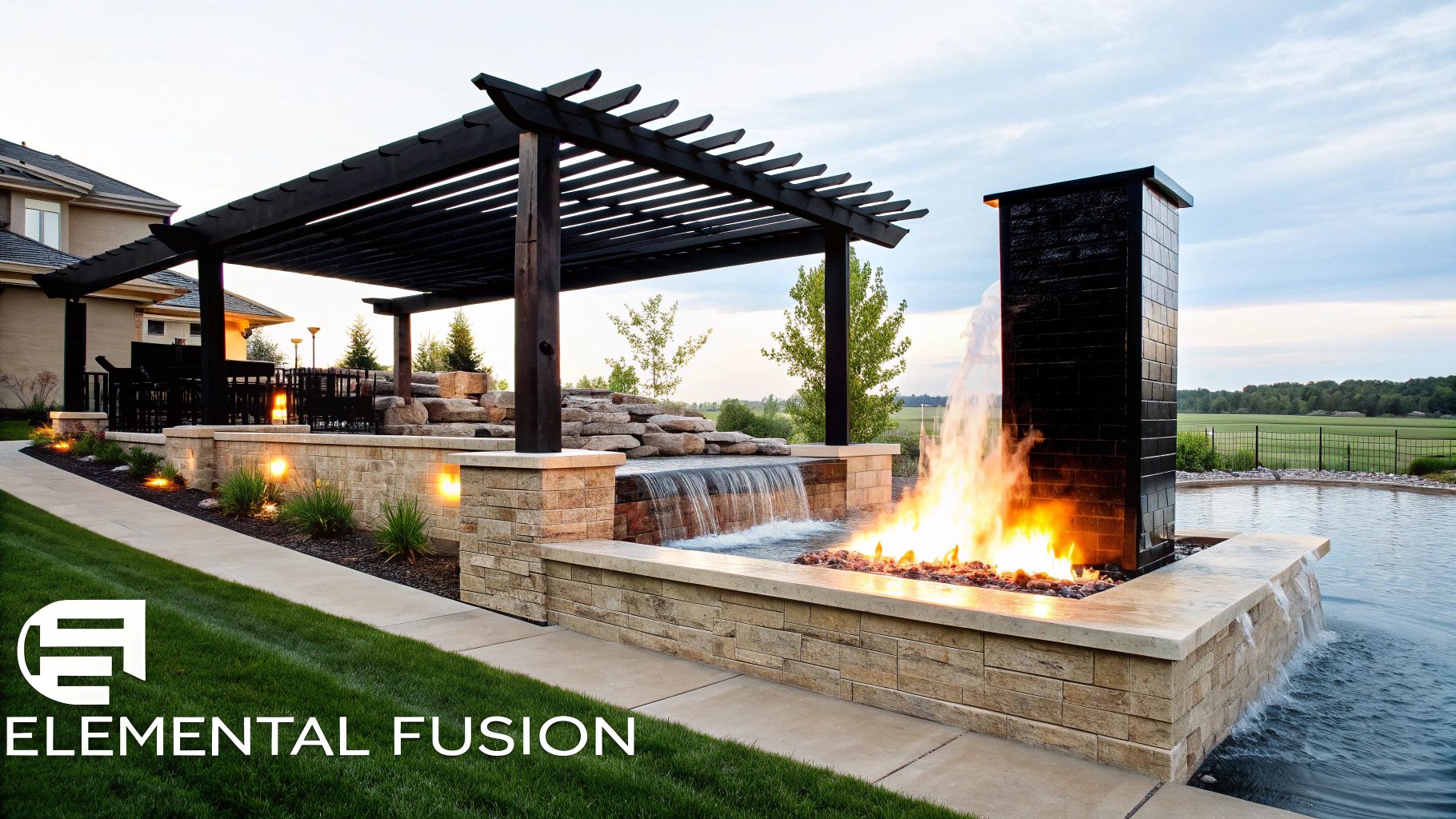
This design works by utilizing staircases or gradual transitions to connect the different levels, effectively maximizing usable space and adding architectural interest. Imagine a lower level dedicated to dining, a mid-level for lounging, and an upper level offering breathtaking panoramic views. The varying elevations not only enhance visual appeal but also create natural divisions for different functional zones. This makes multi-level terraced pergolas a truly standout choice among pergola design ideas.
Examples of Successful Implementation:
Inspiration for this type of design can be found in iconic locations such as the Getty Center terraced gardens in Los Angeles, vineyard viewing terraces in Napa Valley, and the cascading hillside designs by renowned landscape architect Raymond Jungles. These examples demonstrate the potential of multi-level pergolas to create stunning and functional outdoor spaces.
Pros and Cons:
Pros:
- Maximizes usable space, especially on sloped properties.
- Creates natural division of functional areas (dining, lounging, etc.).
- Provides enhanced views from higher levels.
- Adds significant architectural interest and visual appeal.
- Works with, rather than against, challenging topography.
Cons:
- More complex design and engineering, requiring specialized expertise.
- Increased cost due to additional structural requirements, materials, and labor.
- May necessitate retaining walls and extensive foundations.
- Can present accessibility challenges for individuals with mobility limitations.
- Requires careful and comprehensive drainage planning to prevent water accumulation and erosion.
Actionable Tips for Design and Construction:
- Consult a structural engineer: Ensure proper support design and structural integrity, especially on slopes.
- Safety first: Incorporate robust handrails and safety features for all stairways and level changes.
- Illuminate transitions: Design adequate lighting for safe navigation between levels, especially at night.
- Optimize views: Carefully consider the views from each level during the planning phase.
- Drainage is crucial: Plan for efficient water drainage from upper to lower levels to prevent issues.
- Solid foundations: Ensure foundations are designed to account for potential soil displacement on slopes.
When and Why to Use a Multi-Level Terraced Pergola:
This pergola design is ideal for homeowners, contractors, and developers working with sloped terrains or seeking to create distinct functional zones within a larger outdoor space. It is particularly suited for those who value maximizing usable outdoor area while adding a touch of architectural grandeur and visual appeal. From new construction to renovations and remodels, a terraced pergola offers a sophisticated solution for homeowners, commercial property owners, and everyone in between. This unique design element can transform an ordinary backyard into a luxurious outdoor oasis, adding value and enjoyment for years to come. This is why it earns its place as a top-tier pergola design idea.
10. Pergola with Integrated Fire and Water Features
Elevate your pergola design from simple shade structure to a luxurious outdoor oasis by integrating fire and water features. This sophisticated approach creates a multi-sensory experience, transforming your backyard into a private retreat that rivals high-end resorts. Imagine the gentle sound of cascading water mingling with the crackling warmth of a fire, all under the elegant framework of a pergola. This pergola design idea takes outdoor living to a whole new level.
This design concept involves seamlessly incorporating elements like fireplaces, fire pits, fire tables, fountains, waterfalls, or reflecting pools within or adjacent to your pergola structure. The juxtaposition of these contrasting elements—fire and water—creates a dynamic and visually stunning focal point. These features are typically complemented by strategic lighting systems, comfortable seating areas, and weather-resistant construction, allowing for year-round enjoyment.
Examples of successful implementations can be seen in the lavish outdoor lounges at the Bacara Resort in Santa Barbara, designer Scott Cohen's showcase installations, and the signature outdoor living spaces found at Four Seasons resort properties. These spaces exemplify the luxurious atmosphere achievable with this pergola design idea.
Why choose a pergola with integrated fire and water features? It offers a complete sensory experience, extending the usability of your outdoor space into cooler months. The soothing sounds of water mask unwanted ambient noise, while the warmth of a fire provides comfort and ambiance. These strong focal points enhance the overall design and add a touch of luxury to any residential space. Learn more about Pergola with Integrated Fire and Water Features.
Features and Benefits:
- Built-in fireplace or fire pit (gas or wood-burning): Provides warmth, ambiance, and a gathering point.
- Water features (fountains, pools, cascades): Introduces soothing sounds and visual interest.
- Weather-resistant construction: Enables year-round use and protects the structure.
- Dramatic lighting systems: Enhances the ambiance and extends usability into the evening.
- Defined seating areas: Creates comfortable spaces for relaxation and entertainment.
Pros:
- Creates a complete sensory experience (sight, sound, warmth).
- Extends seasonal use into cooler months.
- Water sounds mask ambient noise from surroundings.
- Strong focal points enhance the design.
- Adds a luxury resort feel to residential spaces.
Cons:
- High construction costs ($40,000-$150,000+).
- Complex utility requirements (gas, electric, water).
- Ongoing maintenance for both fire and water features.
- Higher insurance considerations.
- May require specialized contractors for installation.
Tips for Implementation:
- Position water features to catch and reflect light.
- Consider wind patterns when placing fire features.
- Include proper drainage for water features.
- Install separate controls for different elements (fire, water, lighting).
- Plan for proper ventilation around fire features.
- Consider seasonal maintenance requirements during the design phase.
This pergola design idea is particularly appealing to homeowners, condo owners, contractors, builders, developers, and commercial property owners seeking to create a truly exceptional outdoor space. Whether you are undertaking new construction, renovations, or simply remodeling, incorporating fire and water features into your pergola design will undoubtedly transform your outdoor living experience. Popularized by landscape designer Scott Cohen, luxury home builders like Toll Brothers, and high-end resort properties, this trend has become increasingly sought-after for its ability to create a tranquil and luxurious outdoor sanctuary. This luxurious pergola design idea deserves its place on this list for its ability to create a truly unique and captivating outdoor living experience.
Top 10 Pergola Designs: Quick Comparison Guide
| Design Idea | Complexity (🔄) | Resources (⚡) | Outcomes (📊) | Use Cases (⭐) | Advantages (💡) |
|---|---|---|---|---|---|
| Modern Minimalist Pergola | Moderate – requires precise fabrication & installation | Premium materials (steel, composites, glass, LED systems) | Sleek, low-maintenance, contemporary aesthetic | Modern outdoor spaces, urban living areas | Durable, tech-friendly, low upkeep |
| Traditional Wooden Pergola | Variable – DIY feasible but ongoing upkeep | Natural wood, traditional joinery, customizable design elements | Warm, classic look with high customizability | Traditional homes, rustic gardens, seasonal settings | Cost-effective, natural beauty, versatile |
| Attached Pergola with Retractable Canopy | Medium-high – needs structural attachment & waterproofing | Wall-mounted components, retractable fabric & motorized parts | Adaptable shade, rain protection, extended living space | Home additions, adjustable outdoor shelters | Flexible, weather-responsive shade control |
| Freestanding Louvered Roof Pergola | High – integration of motorized louvers & sensors | Premium aluminum, power supply, smart home integrations | Precise control over sunlight, airflow & rain protection | Luxury outdoor areas, tech-inspired landscapes | Low maintenance, advanced environmental control |
| Pergola with Integrated Outdoor Kitchen | High – requires utility integration & professional design | High-end cooking appliances, durable countertops, utility connections | Comprehensive outdoor entertainment & cooking experience | Luxury backyards, outdoor dining and entertaining zones | Increases home value, multi-functional outdoor living |
| Asian-Inspired Timber Frame Pergola | High – specialized joinery and skilled craftsmanship | Authentic timber, traditional construction techniques | Tranquil, culturally rich ambience with natural elements | Zen gardens, cultural retreats, meditative spaces | Distinctive character, artisanal quality, serene vibe |
| Contemporary Circular Pergola | High – complex curved design and non-standard elements | Custom bent materials, specialized structural supports, bespoke furniture | Dramatic focal point with fluid spatial design | Iconic landscapes, modern art-inspired outdoor features | Visually striking, enhances social interaction, space definition |
| Vineyard-Inspired Grape Arbor Pergola | Moderate – needs vine support and routine maintenance | Sturdy posts, lattice systems, integrated irrigation systems | Dual functionality providing shade and edible harvests | Garden retreats, heritage landscapes, edible outdoor spaces | Seasonal beauty, natural cooling, historic charm |
| Multi-Level Terraced Pergola | High – involves multiple platforms & engineering challenges | Structural supports, retaining walls, graded transitions | Optimized use of sloped terrains with distinct functional zones | Hillside properties, landscapes requiring space division | Maximizes space, adds architectural interest, provides panoramic views |
| Pergola with Integrated Fire and Water Features | Very High – complex utility integration & safety requirements | Specialized fire elements, water features, high-end construction materials | Multi-sensory outdoor experience with dramatic focal elements | Luxury resorts, high-end outdoor retreats, complete sensory spaces | Dramatic impact, extended seasonal use, resort-like ambiance |
Designing Your Dream Pergola: Next Steps
From minimalist marvels to traditional timber frames, the possibilities for pergola design ideas are truly endless. We've explored ten distinct styles, each offering a unique way to enhance your outdoor space. The key takeaways to remember as you embark on your pergola journey are to consider your existing architectural style, the functionality you desire, and, of course, your budget. Mastering these concepts will allow you to create a seamless transition between your indoor and outdoor living areas, boosting your home's curb appeal and providing a relaxing sanctuary for years to come. Looking for more inspiration and guidance as you plan your pergola project? Check out these top renovation ideas for LA residents for additional insights.
Whether you envision a romantic vineyard-inspired arbor or a modern pergola with integrated fire features, the perfect pergola design is within reach. Let your creativity bloom and transform your outdoor space into an extension of your home's unique personality. Ready to bring your dream pergola to life? Gladiator Window and Doors specializes in crafting stunning, high-quality custom pergolas that seamlessly integrate with your existing architecture. Visit Gladiator Window and Doors today to explore their design options and begin creating the outdoor oasis you've always imagined.

















